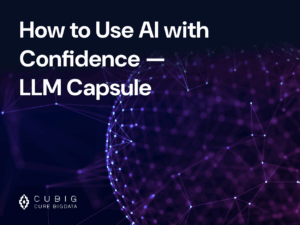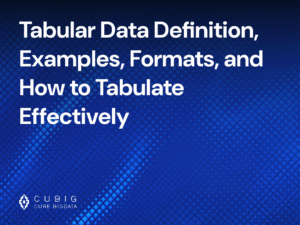What is Data Protection for Privacy? Key Technology and Measures | Azoo AI
Table of Contents
In a digital world where data breaches and cyber threats are rising, data protection is no longer optional—it’s essential. Data protection technology helps organizations secure sensitive information from unauthorized access, loss, or misuse. This guide explains what data protection means, why it matters, and what measures you can implement today.
What is data protection?
Data protection refers to the strategies and technologies used to safeguard digital data from security threats, accidental loss, and unauthorized access. It ensures that sensitive information remains secure and available only to those who are authorized to view or process it. Secure data protection includes encryption, access control, and backup systems.
Why is data protection important?
Protecting sensitive information
Personal and business data must be shielded from leaks and theft. Data protection tools help encrypt files, control access, and monitor usage.
Business continuity
Proper protection ensures that operations can continue even if systems are attacked, corrupted, or experience failure.
Regulatory compliance
Laws like GDPR, HIPAA, and CCPA require strict protection standards to avoid penalties and ensure legal data usage.
Reputation management
Customers are more likely to trust businesses that take data protection seriously. A breach can severely damage brand credibility.
What are data protection regulations?
GDPR (General Data Protection Regulation)
European law that enforces privacy rights and controls how companies collect and use data.
CCPA (California Consumer Privacy Act)
U.S. regulation giving California residents more control over their personal information.
HIPAA (Health Insurance Portability and Accountability Act)
Protects health-related data in the U.S. healthcare system.
PCI-DSS (Payment Card Industry Data Security Standard)
Applies to organizations that process credit card payments, ensuring secure data handling.
Data protection vs Data privacy vs Data security
These three terms are closely related but not the same. Data protection is the overarching approach that includes both privacy (how data is used) and security (how data is guarded).
| Concept | Focus | Example |
|---|---|---|
| Data Protection | Policies and technology to safeguard data | Encryption, backups, DLP |
| Data Privacy | Who can access and control data usage | User consent forms, anonymization |
| Data Security | Measures to physically and digitally protect data | Firewalls, anti-malware, access control |
Principles of data protection
Lawfulness, fairness, and transparency
Collect and use data in ways that are clear, legal, and fair.
Purpose limitation
Only collect data for specific, legitimate purposes.
Data minimisation
Only gather the data you actually need.
Accuracy
Keep personal data up to date and correct.
Storage limitation
Do not store data longer than necessary.
Integrity and confidentiality
Keep data secure and prevent unauthorized access.
Accountability
Take responsibility for data practices and be able to show compliance.
Data protection trends
Privacy regulations on the rise
More countries are adopting privacy laws that require proactive protection practices.
AI and machine learning in data security
AI helps detect anomalies, automate encryption, and predict breaches.
Zero trust architecture
Every user and device must be verified, even inside the network.
Data breach preparedness
Organizations are investing in response planning and backup systems.
Data localization and sovereignty
More regions require data to be stored and processed within their borders.
Azoo AI integrates these trends by offering next-gen data protection features like AI-driven anomaly detection, policy-based access control, and automated encryption workflows.
Data protection technologies
Encryption
Converts data into unreadable code to protect it from unauthorized access.
Backup and Recovery
Keeps copies of important data for restoring after loss or attack.
Access control
Limits who can access or edit specific data based on roles and permissions.
Network security
Protects data as it moves between systems or devices through firewalls, VPNs, and monitoring tools.
Physical security
Ensures hardware is protected from theft, damage, or unauthorized access.
Data protection strategy and practices
A strong data protection strategy combines technology and clear measures (or actions) to ensure ongoing security.
Data discovery and classification
Understand where your sensitive data lives and how it’s categorized.
Data lifecycle and storage management
Apply protection rules depending on how long and where data is stored.
Access control and identity management
Use identity systems like SSO and MFA to prevent unauthorized access.
Encryption and data masking
Encrypt stored or transmitted data and mask sensitive fields in live environments.
Risk assessment and incident response
Regularly assess threats and create a plan to handle data-related incidents quickly.
Backup, recovery, and replication
Maintain multiple data copies and test disaster recovery processes.
Endpoint and network security
Ensure all user devices and networks are protected.
Policy documentation and compliance
Write clear policies and demonstrate adherence to regulations.
Security monitoring and DLP
Track suspicious activity and prevent data leaks with DLP tools.
User training and stakeholder communication
Educate your teams and stakeholders on best practices for data protection.
Data protection FAQs
What are the 5 data protection principles?
Lawfulness, fairness and transparency, purpose limitation, data minimization, accuracy, and storage limitation.
What are the 7 data protections?
Adds integrity, confidentiality, and accountability to the above five.
What are examples of data protection?
Encryption, backups, access control, anonymization, and user education.
What is an example of a Data Protection Act breach?
Sending personal data to the wrong recipient, misplacing unencrypted devices, or cyberattacks causing unauthorized access.
Want to strengthen your data protection with Azoo AI? Contact us to learn how.
CUBIG's Service Line
Recommended Posts









